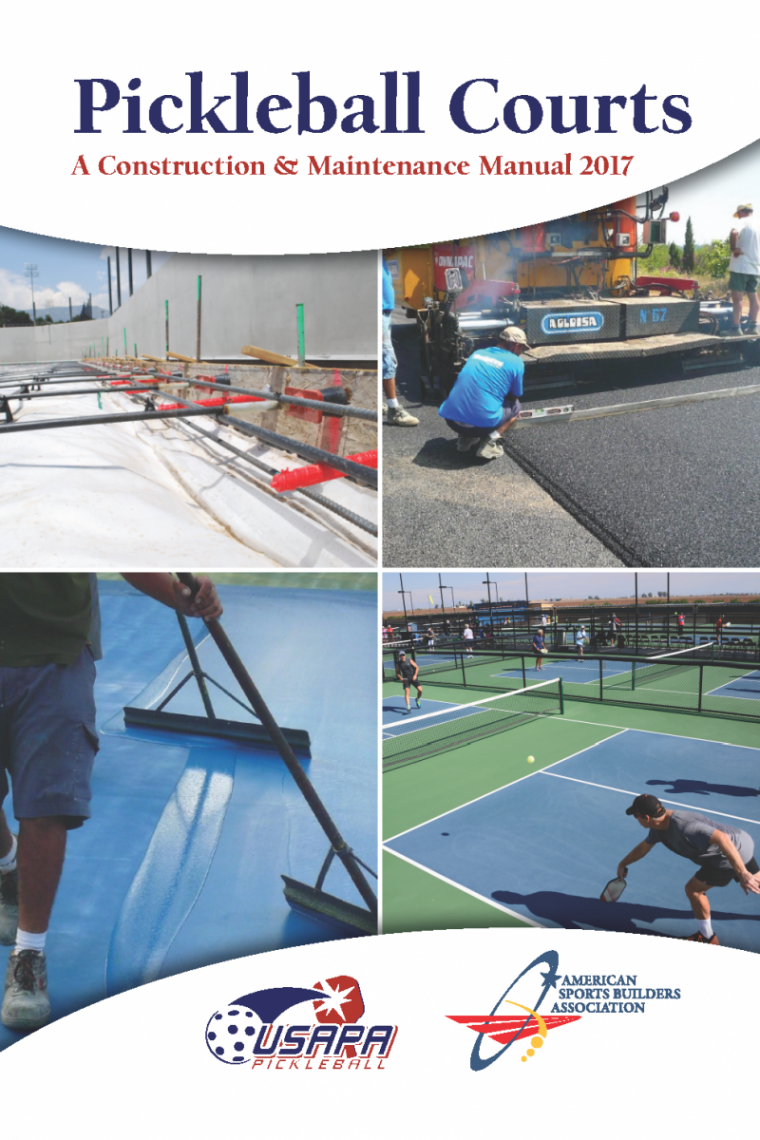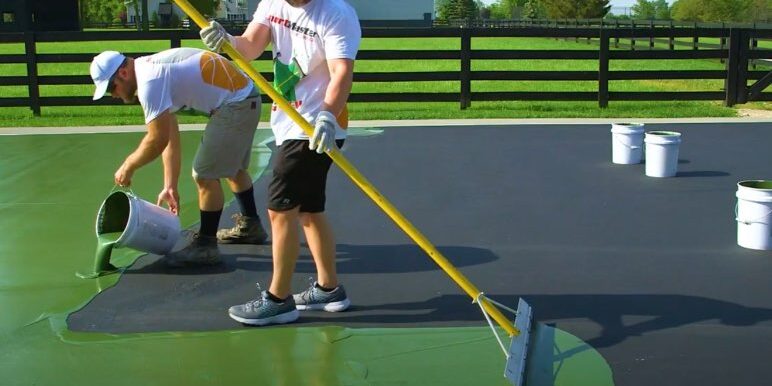A Comprehensive Overview to Designing the Perfect Pickleball Court for All Skill Degrees
Creating a pickleball court that caters to players of differing skill levels necessitates a diverse method, encompassing vital aspects such as court measurements, surface materials, and ease of access functions. The balance between capability and safety and security is critical, as is the development of a welcoming atmosphere for both individuals and viewers. With the best design options, one can cultivate an interesting environment that promotes pleasure and ability development. Pickleball court contractor. Nevertheless, the intricacies associated with attaining this balance are frequently overlooked. What details considerations must be prioritized to make certain an effective execution?

Understanding Court Dimensions
Recognizing the dimensions of a pickleball court is critical for both gamers and designers, as these requirements ensure a constant and reasonable having fun experience. A standard pickleball court measures 20 feet vast by 44 feet long for both songs and doubles play. The court is separated right into two equivalent halves by a net that stands 36 inches high at the sidelines and 34 inches at the facility.
Trick attributes of the court include the non-volley zone, commonly referred to as the "kitchen," which expands 7 feet from the internet on both sides. This location is crucial for controling gamer motion and volleying, guaranteeing tactical play. Furthermore, the solution locations on each side of the court are necessary, measuring 10 feet large and 15 feet deep, designed to fit proper serving techniques.
Surrounding the court, a location of at least 10 feet need to be designated as the safety and security zone, enabling gamers enough area to relocate and prevent injuries during play. Sticking to these dimensions not only cultivates reasonable competitors yet also promotes security and pleasure for all individuals, making it essential for any type of pickleball court style.
Selecting the Right Surface Area
The choice of playing surface area for a pickleball court considerably influences the video game's characteristics and gamer experience. Selecting the proper material is crucial for making sure player efficiency, security, and comfort. Common surfaces include asphalt, concrete, and specialized sports flooring.
Asphalt is a popular choice as a result of its affordability and sturdiness. It offers a regular playing surface area however can be hard on joints over expanded play. Concrete, while similar in longevity, uses marginal versatility, potentially bring about boosted influence on players' bodies.
For an extra cushioned experience, several facilities choose specialized sporting activities flooring, such as modular floor tiles or synthetic surfaces. These materials usually include shock-absorbing residential or commercial properties, lowering the risk of injuries and enhancing player comfort. Moreover, such surface areas can improve sphere bounce uniformity, which is crucial for reasonable play.
When choosing a surface, think about aspects such as environment, maintenance requirements, and the strength of play. An appropriate surface area not just boosts gameplay yet also adds to the longevity of the court itself. Ultimately, understanding the subtleties of different products will certainly assist in producing an optimum pickleball atmosphere tailored to various skill levels.
Ideal Court Design
An ideal court design is essential for maximizing both gamer performance and spectator enjoyment in pickleball. The dimensions of a standard pickleball court are 20 feet wide by 44 feet long for increases play, keeping a clear border that boosts gameplay. The net, placed at 36 inches high at the sidelines and 34 inches in the center, is essential for maintaining the dynamics of the video game.
Including designated areas around the court for gamers to move freely is essential. A minimum of 10 feet of clearance on all sides of the court is suggested to avoid crashes and supply space for viewers. In addition, alignment plays a significant duty; the court ought to preferably be aligned north-south to reduce the effect of sun glare on gamers throughout click for source peak hours.
Effective viewer placement is similarly vital. Elevated checking out bleachers or locations positioned behind the sidelines can enhance the experience while making sure safety and security. Clear and visible court markings aid in gameplay, with contrasting colors for boundaries and non-volley areas that delineate crucial areas for players. Overall, a properly designed court format cultivates an interesting setting for both spectators and gamers.

Access Factors To Consider
When designing a pickleball court, making certain availability for all players, consisting of those with impairments, is paramount. A thoughtfully made court can foster inclusivity and urge involvement from people of differing abilities.

Access paths to the court must also be very carefully prepared. Make certain that pathways resulting in the court are large sufficient for mobility device individuals and are outfitted with ramps where necessary. Signage ought to be big and clear sufficient to be easily read.
Furthermore, seating areas ought to be developed to permit easy access to and from the court. This includes providing designated spaces for viewers who may have movement challenges.
Lastly, guarantee that washroom centers neighboring satisfy accessibility criteria. By taking into consideration these components, you can produce a pickleball court that rates and usable for every person, therefore promoting a vibrant and diverse neighborhood of players.
Upkeep and Upkeep
Correct upkeep and upkeep of a pickleball court are important for ensuring ideal having fun conditions and extending the lifespan of the center. Regular assessments should be performed to determine and deal with any kind of damages or put on, such as cracks in the surface area or Visit Your URL loose netting. These concerns, if left unattended, can adversely influence gameplay and security.
Surface area upkeep is vital; courts need to be cleaned up often to eliminate particles, leaves, or dust that can impact grip. For hard courts, regular pressure washing is recommended to maintain surface area honesty and aesthetic appeals. If your court is made from softer materials, such as asphalt, sealing or resurfacing may be needed to shield versus weather-related wear.
In addition, internet height and tension ought to be inspected regularly, as improper setups can modify gameplay. Keeping bordering locations, consisting of secure fencing and lighting, is similarly crucial for guaranteeing a risk-free and pleasurable environment.
Verdict
In final thought, the layout of an ideal pickleball court requires a careful approach that includes appropriate measurements, suitable surface area products, browse around this web-site and thoughtful format. By adhering to these guidelines, the perfect pickleball court can be created, advertising satisfaction and sports advancement for gamers of varying skill degrees.
Creating a pickleball court that caters to players of varying skill levels necessitates a complex technique, including necessary elements such as court measurements, surface materials, and availability functions.Understanding the measurements of a pickleball court is important for both designers and gamers, as these specifications ensure a constant and reasonable having fun experience.The choice of playing surface area for a pickleball court significantly affects the game's characteristics and player experience.An optimum court layout is necessary for making best use of both player efficiency and viewer enjoyment in pickleball. By sticking to these standards, the perfect pickleball court can be developed, advertising pleasure and sports growth for players of varying skill levels.